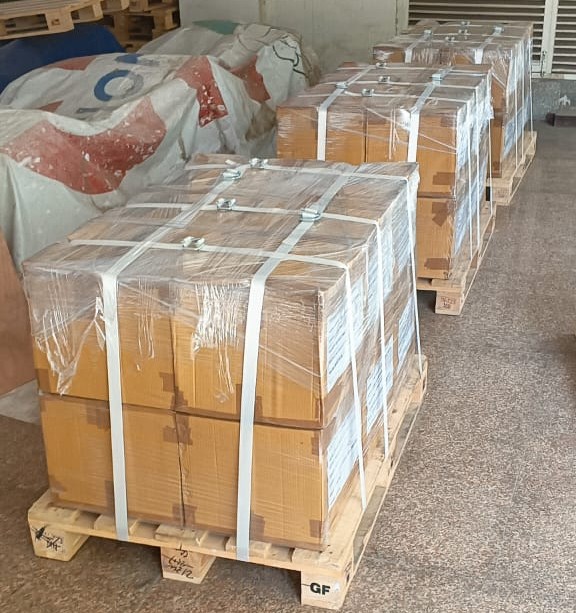Cargo Palletization
Product Details:
- Product Type Cargo Palletization
- Material Wood
- Shape Rectangular
- Industrial Use Packaging
- Size Standard
- Warranty Yes
- Click to View more
Cargo Palletization Price And Quantity
- 1 Unit
- 2250.0 INR/Unit
Cargo Palletization Product Specifications
- Wood
- Standard
- Cargo Palletization
- Yes
- Packaging
- Rectangular
Cargo Palletization Trade Information
- Cash in Advance (CID)
- 1 Unit Per Day
- 3 Days
- No
- Western Europe Central America North America South America Eastern Europe Asia Australia Middle East Africa
- South India North India East India All India Central India West India
Product Description
Cargo Palletization of Goods
Cargo palletization is a widely used technique in the packaging and transportation industry that involves the systematic arrangement of goods onto a wooden pallet, followed by binding the load using composite straps, stretch film or other securing materials.
The first step in palletization is placing the goods onto a wooden pallet, which acts as a stable base for the items. The pallet is typically made of wood, although plastic or metal alternatives are also used in some cases.
The goods are carefully stacked and arranged to ensure they are evenly distributed and securely placed, preventing shifting or damage during transportation. The arrangement also helps in optimizing the available space on the pallet, making it more efficient for handling, storage, and transport.
Once the goods are placed on the pallet, they are bound together using composite straps or other suitable materials, such as stretch film or shrink wrap. The composite straps are made from strong, durable materials, which tightly secure the load to the pallet, preventing individual items from moving during transit.
The use of composite straps helps to firmly hold the cargo together, ensuring it remains intact and stable throughout the journey, whether its being moved manually, by forklift, or via automated handling systems.
The palletized goods may also be wrapped with stretch film or shrink wrap to provide an additional layer of protection against dust, moisture, and external elements. This also helps to maintain the integrity of the goods, especially during long-distance shipping or storage.
Cargo palletization is a critical technique in modern logistics and transportation, offering numerous benefits in terms of handling, storage, and shipment efficiency. By placing goods on sturdy wooden pallets and securing them with composite straps, palletization provides enhanced protection, smoother handling, and cost-effective shipping solutions.
This technique has become an industry standard in the movement of goods, ensuring safer, faster, and more organized logistics operations. This method plays a crucial role in improving the efficiency, safety, and ease of handling during the movement of goods.
FAQs of Cargo Palletization:
Q: What is the shape of the Cargo Palletization product?
A: The shape of the Cargo Palletization product is rectangular.Q: What is the material of the Cargo Palletization product?
A: The material of the Cargo Palletization product is wood.Q: Does the Cargo Palletization product come with a warranty?
A: Yes, the Cargo Palletization product comes with a warranty.Q: What is the industrial use of the Cargo Palletization product?
A: The industrial use of the Cargo Palletization product is for packaging.Q: What is the size of the Cargo Palletization product?
A: The Cargo Palletization product comes in a standard size.
Price:
- 50
- 100
- 200
- 250
- 500
- 1000+





 Send Inquiry
Send Inquiry Send SMS
Send SMS Call Me Free
Call Me Free